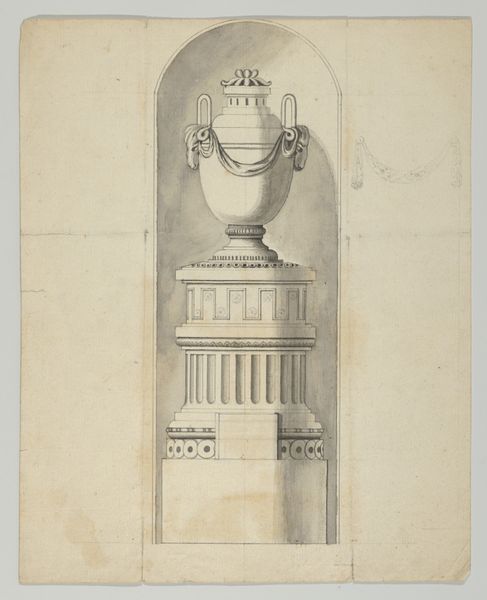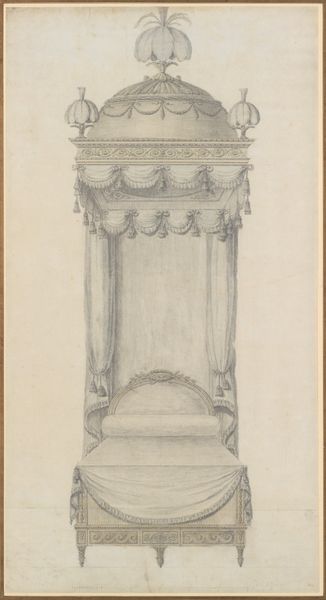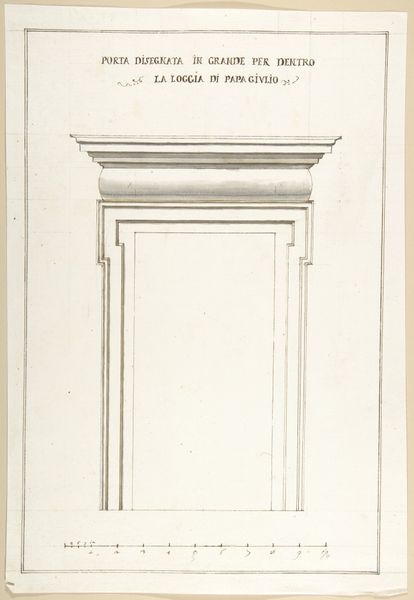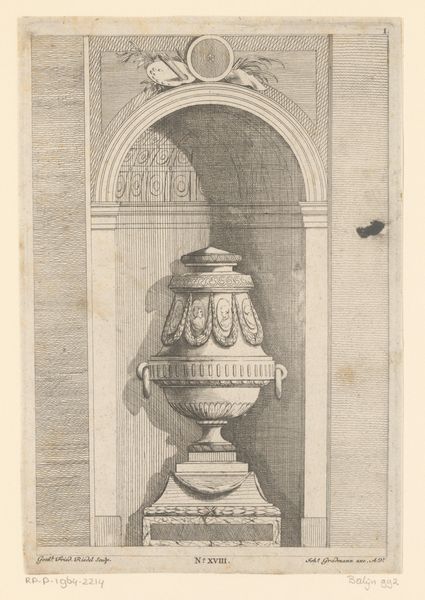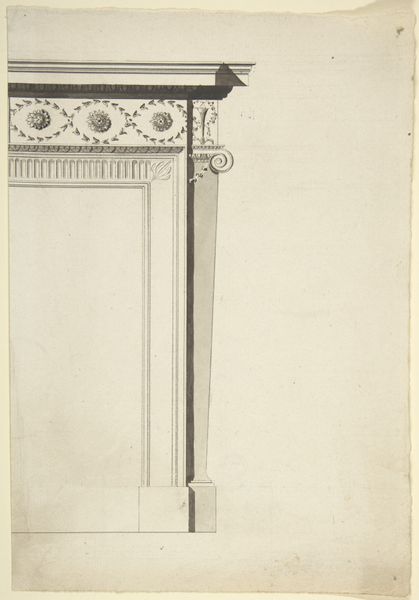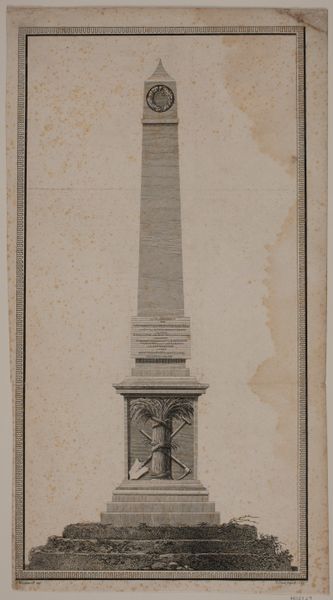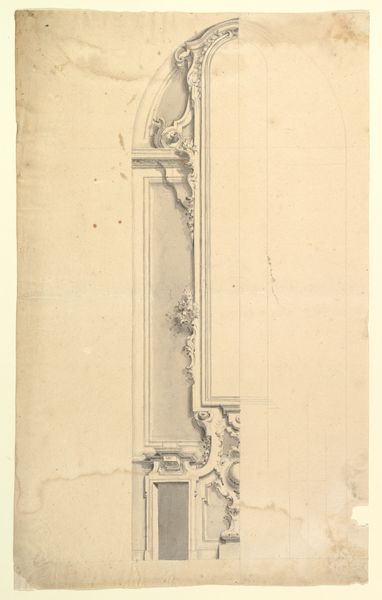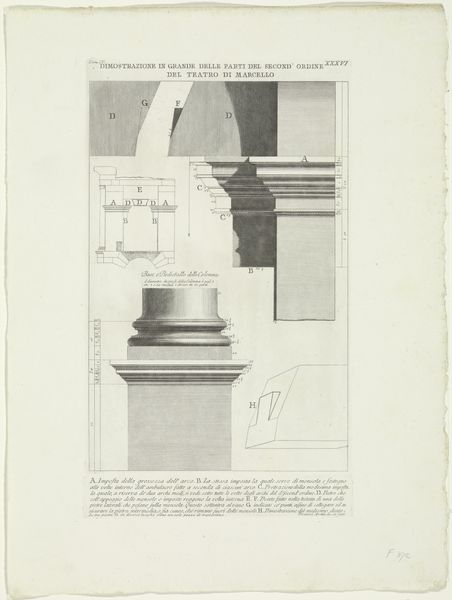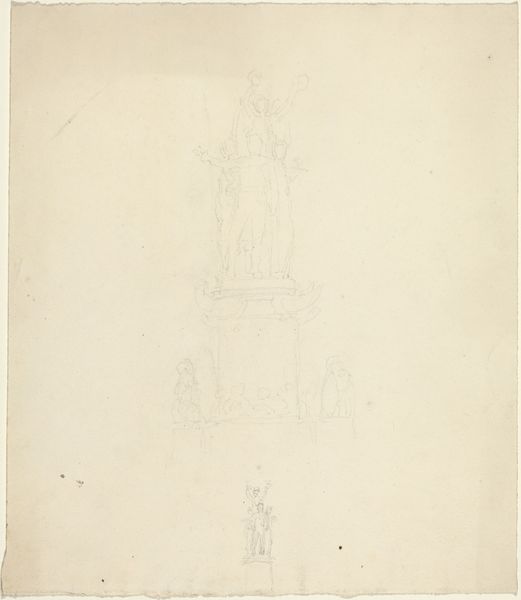
drawing, print, pencil, architecture
#
drawing
#
neoclassicism
# print
#
classical-realism
#
form
#
geometric
#
column
#
pencil
#
line
#
architecture
Dimensions: sheet: 19 7/16 x 8 1/4 in. (49.3 x 21 cm)
Copyright: Public Domain
Curator: Looking at this rendering, my initial reaction is how powerful this column seems even as a draft. The weight of the imagined structure feels palpable. Editor: Indeed. This "Design for a Column and Pedestal" comes to us from the 19th century. Although the artist remains unknown, it exemplifies the Neoclassical style with its clean lines and geometric forms. We find it today in the collection of the Metropolitan Museum of Art. Curator: Neoclassicism, in itself, presents an interesting paradox. Often positioned as a return to simpler aesthetics, we see here a statement about power and permanence, especially during periods of societal upheaval, like the 19th century with its burgeoning industrial revolution. The column acts almost as a masculine, phallic assertion against changing socio-political landscapes. Editor: Your interpretation resonates. This design likely served a purpose within larger conversations about civic identity. Nineteenth-century urban planning relied heavily on such classical structures to convey ideas of democracy and stability, whether those ideals were genuinely reflected in society or not. The pencil drawing shows both precise architectural planning and cultural ambition. Curator: Thinking about who this imagery speaks to – consider the class dynamics. While the architectural design aims to represent a unified public image, in reality, the commissioning, creation, and eventual access to such structures overwhelmingly favors wealthy patrons and ruling classes, thereby exacerbating social divides. Editor: Precisely. Moreover, the style is itself a statement. Neoclassicism, embraced by both democratic republics and empires, presents a visual paradox—a shared language deployed for very different socio-political ends. Examining the architectural trends and intended societal messages embedded within the artistic decisions further underscores this artwork's public significance, whether implemented or not. Curator: Thinking through the lens of power makes this seemingly innocuous sketch quite charged. The monument becomes an active participant within complex conversations about cultural capital, visibility, and whose histories are memorialized, a constant theme we contend with still in our own present moment. Editor: Absolutely. It allows us to better appreciate the lasting and sometimes complicated impact architecture has on civic life, social standing, and self-identity. Curator: A powerful consideration for sure.
Comments
No comments
Be the first to comment and join the conversation on the ultimate creative platform.
